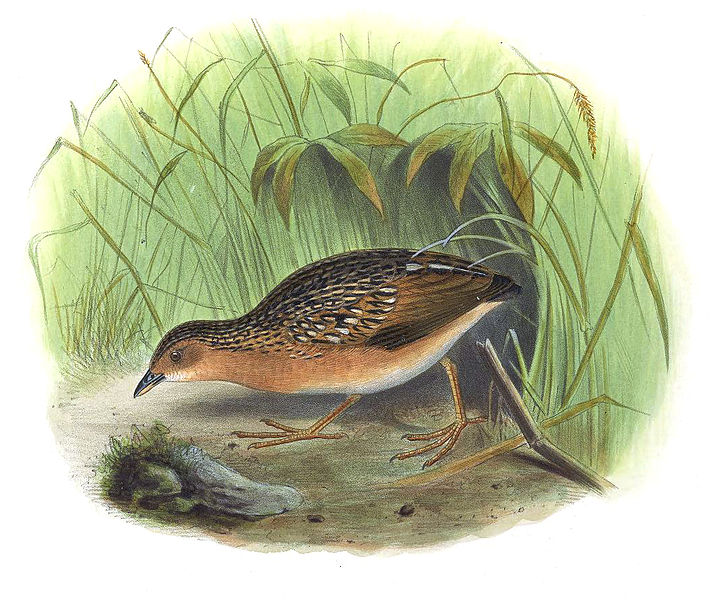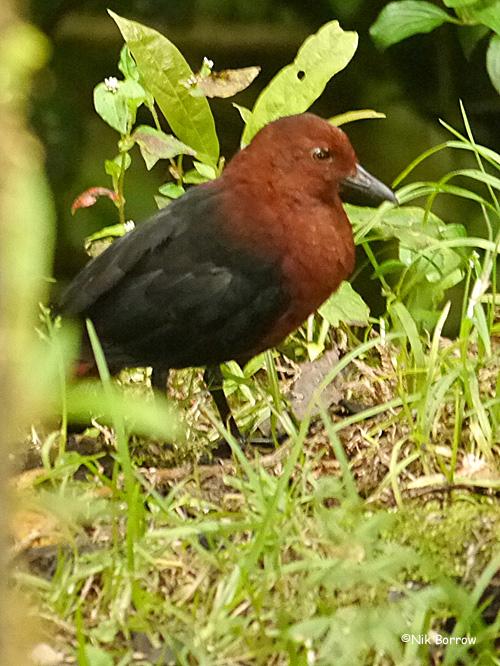
Rallina forbesi
SUBFAMILY
Rallinae
TAXONOMY
Rallicula forbesi Sharpe, 1887, Owen Stanley Range, New
Guinea. Four subspecies recognized.
OTHER COMMON NAMES
English: Forbes’s chestnut rail; French: Rвle de Forbes; German:
Nymphenralle; Spanish: Polluela de Forbes.
PHYSICAL CHARACTERISTICS
8–10 in (20–25 cm); 3–3.2 oz (87–91 g). Foreparts chestnut;
rear upperparts and wings blackish-brown, spotted buff in female;
rear underparts barred. Juvenile duller and browner.
DISTRIBUTION
R. f. steini: central New Guinea; R. f. parva: northeastern New
Guinea (Adelbert range); R. f. dryas: northeastern New Guinea
(Huon Peninsula); R. f. forbesi: southeastern New Guinea.
HABITAT
Montane forest.
BEHAVIOR
Poorly known and secretive
FEEDING ECOLOGY AND DIET
Invertebrates, small vertebrates, and seeds.
REPRODUCTIVE BIOLOGY
Roosting nest a football-sized domed structure of leaf skeletons
and moss on the ground. One breeding nest was a platform in
a tree. Eggs probably four to five, white.
CONSERVATION STATUS
Not threatened. Not uncommon locally in the east, probably
scarce or rare in west.
SIGNIFICANCE TO HUMANS
Regularly hunted for food.
Other popular Animals
Photo Gallery of - Forbes’s forest-rail




 Animalia Life
Animalia Life